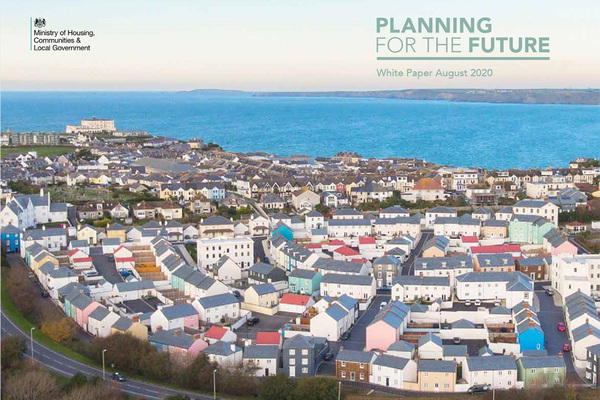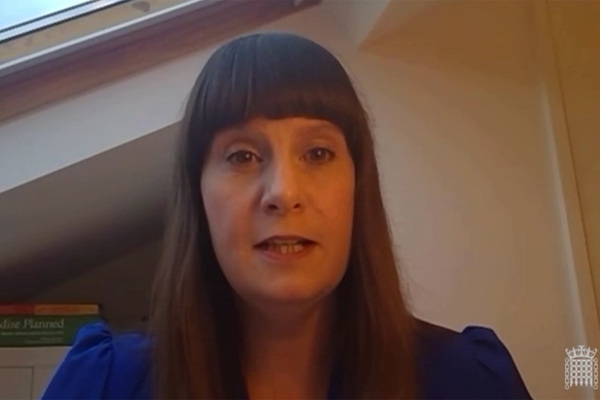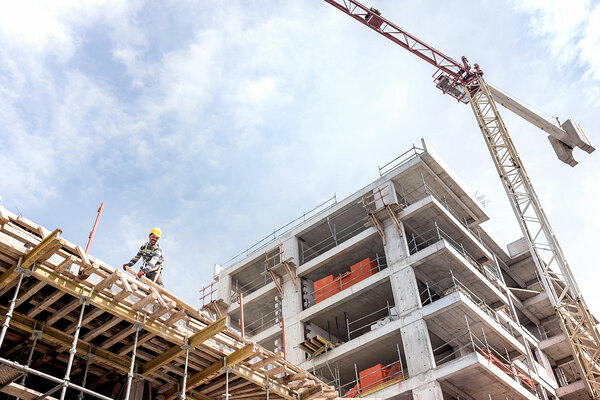You are viewing 1 of your 1 free articles

Jamie Ratcliff is executive director of people and partnerships at Network Homes
The Infrastructure Levy could be a better way of funding development
The sector has been sceptical about switching away from Section 106 to a levy system. But there are opportunities to create something better, writes Jamie Ratcliff
The government’s Planning for the Future white paper has created a furore. But different groups are angry about different things.
A “mutant algorithm” deciding where homes should be built has occupied MPs’ bandwidth. Meanwhile, moving democracy upstream is what has exercised councils.
For the housing sector, it’s been the infrastructure levy. And the sector’s opinion has been generally very negative.
Network’s response is more optimistic. Building on Making Land Deliver and our contribution to Policy Exchange’s Planning Anew, we think there’s a way to design a levy that will deliver more affordable homes with more speed and more certainty than the current system does.
It addresses the six most commonly cited problems with the proposals.
“Developers can play their trump card of viability to reduce contributions – sometimes to zero”
1. ‘Section 106 delivers half of all affordable homes’
This is true. It’s also true that endless negotiations with under-resourced councils can create huge delays, which small and medium-sized builders struggle to navigate. These firms are thus significantly under-represented in the housing market.
Developers can play their trump card of viability to reduce contributions – sometimes to zero. This uncertainty inflates land prices because purchasers are incentivised to assume the lowest possible levels of affordable homes when valuing land.
The success of Section 106 in delivering affordable homes, at a time when land-led delivery has been challenging, doesn’t mean it couldn’t or shouldn’t be changed. It means we need to be sure its replacement is better.
2. ‘It will make some sites no longer viable and not capture enough value on others’
The ideal mechanism for capturing land value and developer profits is one that levies exactly the right amount on every site for the scheme to be viable, while also being transparent, certain and not negotiable. Our current system attempts to do the former, but cannot do the latter.
We can keep most of this benefits of Section 106 if we allow councils to set more than one rate. If the rate varies by greenfield, brownfield, location and – perhaps most importantly – the current use value of the site, planning authorities can use data-led research to set rates that capture the most value possible.
“Add in transparent reporting of how much revenue is raised and how it’s spent – so that electorates can hold councils to account – and this could deliver far more homes than Section 106 does”
3. ‘It won’t deliver enough affordable homes’
In the new world, there’ll be more competing with affordable homes for how the levy is spent. But there will also be huge benefits most commentators have overlooked.
The Community Infrastructure Levy isn’t spent on affordable homes, whereas its replacement is likely to be. Permitted development rights and commercial development currently contribute no affordable homes; under the new system they would.
Add in transparent reporting of how much revenue is raised and how it’s spent – so that electorates can hold councils to account – and this could deliver far more homes than Section 106 does.
4. ‘Less high value areas would deliver fewer affordable homes’
This isn’t a new problem: Section 106 works by diverting land value uplift towards towards affordable homes. This uplift is higher in higher value areas. In any case, the cost of providing affordable homes is also higher in higher value areas, so it’s unclear what the net effect would be.
And to state a truth so obvious it’s almost tautological, more affordable homes are needed in less affordable areas.
Either way, it doesn’t matter – because the scheme was always viable on the amount initially quoted
5. ‘It won’t deliver on-site affordable homes’
This is an obvious problem arising if the levy was based on achieved sales values – if homes are already sold, they can’t be used as social housing. So what’s the alternative?
Imagine a world like this:
- In their planning application, developers predict the gross development value. They pay the levy on this amount, regardless of what the real value is. They effectively choose how much tax to pay.
- After completion, the council buys as many homes as it likes. The price is determined by the value the developer submitted. If it guessed too low, the council buys all the homes for less than they’re worth. Too high and they’ve paid too much tax.
- Either way, it doesn’t matter – because the scheme was always viable on the amount initially quoted.
No delays, no negotiation – not even a commonly accepted valuation of the block is required.
6. ‘Social landlords won’t have control over the design of homes they manage’
This is a problem with Section 106 that a levy could improve. Imagine the same process above, but a developer wants certainty over how the homes will be used so it can design them accordingly.
It and a housing association submit a planning application but instead of paying a levy, they include enough affordable homes in the application to effectively pay the levy in-kind.
This would be attractive for developers because housing associations can pay them earlier using their own resources and grant funding. Housing associations would like it because they are involved from the earliest stage, unlike under the current system.
But overall, the biggest win for the affordable housing supply is the white paper’s reforms taken as a whole. If the proposals get more homes built in the areas people want to live, there will be more value to tax.
More money available for affordable homes and more certainty that the affordable homes will actually be delivered – that doesn’t sound so bad, does it?
Jamie Ratcliff, executive director of business, Network Homes
Sign up for our development and finance newsletter
Already have an account? Click here to manage your newsletters











